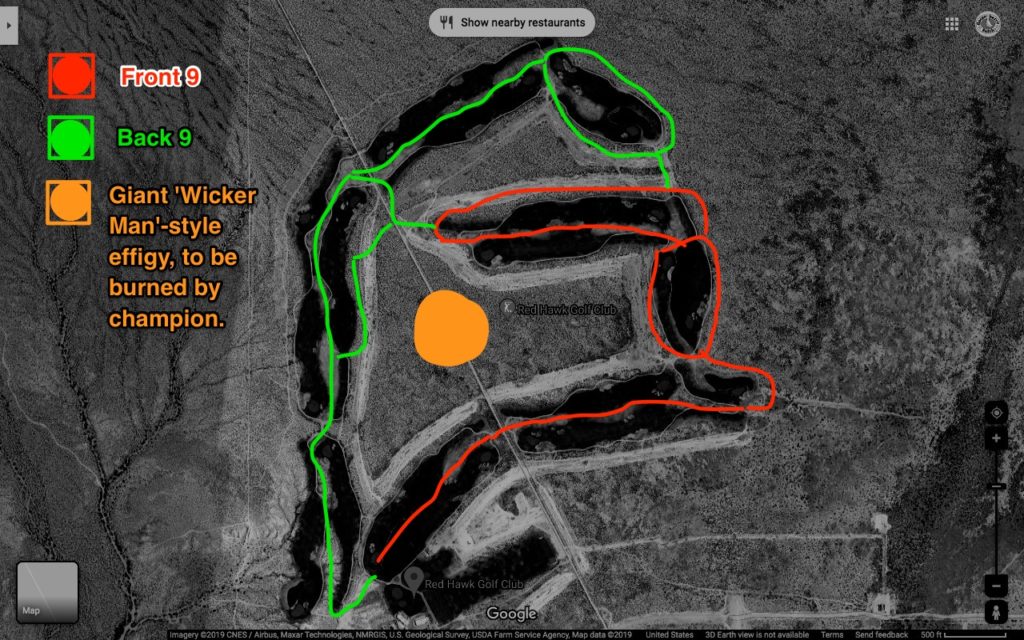You may hate the PGA Tour’s course setups, schedule, the major it shares a name with (or all of the above), but chill for a moment and consider the significant social impact the Tour has had. We’re serious! We’re discussing social good on a website named after Black Metal!
During the 2018 PGA season, the Tour had a combined $190 million “charitable impact” on communities / organizations that hosted an event. For the most part, it’s not difficult to find where these numbers are coming from. The FedEx-St. Jude Invitational obviously benefits the title hospital. Jack Nicklaus is an avid proponent of Nationwide Children’s Hospital in nearby Columbus, and the Memorial Tournament behaves accordingly. The biggest single-year donator on tour was The Players Championship, which brought in $9.25 million for affiliated charities. But it can get better.
What about the wider social implications of a professional golf tournament? We’re talking Adam Smith’s “Invisible Hand” theory here: People visiting golf tournaments need places to stay, places to eat and, presumably, places to drink. The classic example is The Masters; although none of the Masters Tournament Foundation’s funds go into the local community (they go to youth golfing incentives, not trying to be a jerk here), the financial impact of the tournament on the region’s economy is estimated to be around $125 million, circa 2015. This is huge in a city—the actual Augusta, GA—that few outsiders realize features a generally impoverished citizenship.

Here’s the point: The PGA could make an enormous social impact by adapting its schedule to fit social needs. And that’s why we’re proposing the tour take a totally theoretical spin in Las Cruces, New Mexico.
You’ve never heard of Las Cruces, and that’s reasonable. It’s about 45 miles from the Mexican border, and hosts 100,000 residents (not too shabby for a city you’ve never heard of). At 27.9 percent, it has the fourth-highest poverty rate of any city in the United States. Typically, this stat comes with “availability of jobs” (reasonable) and “why don’t they gets jobs” (less reasonable) argument. Here’s the thing…nearly 10% of those employed full-time in Las Cruces still live in poverty. That’s the seventh-highest of any community in the United States. You expect that for baristas working in San Francisco…not middling cities like Las Cruces. The city hasn’t seen a dropoff in jobs…but it has seen a dramatic spike in retirees. There is frequent reporting on seniors living in poverty, but far less attention to just how little senior home-care workers earn. This report demonstrates the nationwide problem, and having spoken with the women who kept my grandmother and great grandmother alive in Sun City, Arizona, I can attest that struggle is real. It’s my strongest hunch to explain the stats presented above.
Prior to requiring home-care, however, many retirees enjoy golfing. The best option is Red Hawk Golf Club, currently ranked No. 9 in New Mexico by my trusted Top100GolfCourses.com. The Ken Dye design sits northeast of downtown, at the foot of Doña Ana Peak. There is one surprising fact about this course (rates max out at $62 on weekends) and one mind-boggling fact: Yardage maxes out at more than 7,500 yards! That’s 300 yards longer than what TPC Scottsdale plays for the Wastewater Management championship. And here’s our first qualifier for why Las Cruces could handle a PGA event…the course is ready.

There are some side notes on that, of course. Las Cruces sits at 3,900 feet…that’s not Denver altitude, but it’s a far cry from Scottsdale’s 1,250. Still, 7,500 should be enough to engage a PGA Player. Par 5s range from 555 to 601 (three more than 575), and Par 3s from 177 to 242. Thanks to a range of irrigation ponds, the course often plays with a similar degree of Weiskopfian risk/reward. No. 6 is potentially drivable at 347 yards, for those who want to risk a fade toward the water that runs up the left side. No. 14 is even more promising, with an enormous front-right bunker daring thumpers to come hard at the 330-yard Par 4’s green. Higher amounts of fairway undulation (again, compared to Scottsdale) could balance the altitude benefit.
Red Hawk is also ready for visitors. An optimal PGA event, needs travel channels, with the assumption most fans generally won’t walk the course’s entirety while following one golfer, so it’s nice to have multiple points where a visitor can travel between nines. The Old Course and several other Open rotas are perfect because the front nine runs out, and the back comes back along the same path. Contrast that with Muirfield Village’s “bow” routing, which makes it impossible to switch anywhere outside of the clubhouse because one, the loops travel outward in opposite directions and two, the presence of homes in between the holes within the loops. Red Hawk’s routing, on the other hand, allows switching nines at multiple points: the turn, between the third green and fourteenth tee, or between the fifth green and fourteenth green. Changing location within nines is simple, as each comes back in the same line it went out.

New Mexico, even at its Southern border, is not nearly as hot as spaghetti Westerns make it out to be. The Houston Open will be teeing off this morning, in a city with average October highs of 79 degrees. The average October high in Las Cruces is…79 degrees. We’re not saying that Las Cruces should outright play host to the PGA Championship. It’s not like we’re telling them to play in 90 degree heat (like certain Championships). It’s an ideal setting for Fall golf.
The biggest question, however, is how many people show up to watch this thing? First, let’s toss out the idea that residential population is not the first item on the PGA’s list when sanctioning events. The RSM Classic, The Sentry Tournament of Champions, The Corales Puntacana Club Championship and the RBC Heritage are located far from significant population centers…but happen to be tourist destinations (especially RBC) or are hosted by Davis Love III (especially RSM). One major exception during Fall golf is The Military Tribute at Greenbrier. The hotel is nice, but White Sulphur Springs has a population of 4,500. We’re not proclaiming any sort of injustice here…anything that can bring money to one of the nation’s most impoverished states is huge.
It’s worth noting that the city of White Sulphur Springs is in the middle of nowhere. Las Cruces isn’t. It’s a 50-minute drive from El Paso, the nation’s no. 21 most-populous city. With nearly 697,000 residents, El Paso dwarfs the average PGA event feeder city. In order to find a city at least that size in relation to White Sulphur, you’ll need to drive more than four hours to Washington D.C. Add that to the population of Las Cruces, which includes 25,000 students enrolled at New Mexico State University (side note: We checked to make sure this wasn’t a false-positive behind the city’s amplified poverty problem…you can see the numbers here).
We haven’t reached out to either Red Hawk Golf Club, the city of Las Cruces, or the PGA about this. But I’m starting to feel we need to make some calls…and we can totally buy into the patriotism angle Greenbrier is milking these days. Look out for 2022…the first White Sands Missile Range Classic.